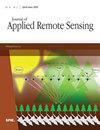Landslide susceptibility prediction by gray wolf optimized support vector machine model under different factor states
IF 1.4
4区 地球科学
Q4 ENVIRONMENTAL SCIENCES
引用次数: 0
Abstract
Landslide susceptibility prediction (LSP) is crucial for hazard prevention and geological risk assessment. Support vector machine (SVM) is widely used for LSP, but its parameter optimization problem affects the prediction accuracy and generalization ability of the model, and variations in parameter combinations may result in different prediction outcomes, which brings some challenges to the application of the model. We present a procedure for LSP using the gray wolf optimization (GWO) algorithm to optimize SVM models in the Sanshui District, Foshan City, China. Fifteen factors affecting landslide susceptibility are selected and processed by the natural breakpoint method and normalization method. To prevent overfitting and improve the generalization ability of the model, the five factors with high correlation are excluded using the Pearson correlation coefficient. The grid search method and GWO are used to optimize the SVM parameters and establish the GWO-SVM model. The results indicated that the GWO-SVM model, which incorporated the normalization method (referred to as GWO-SVM-NOR), demonstrated superior predictive accuracy, achieving an impressive area under the curve value of 0.886. The gray wolf algorithm improves the fitting accuracy of SVM and optimizes the model prediction performance with better stability, which is suitable for predicting areas susceptible to landslides.不同因素状态下灰狼优化支持向量机模型的滑坡易感性预测
滑坡易感性预测是灾害预防和地质风险评估的重要内容。支持向量机(SVM)广泛应用于LSP,但其参数优化问题影响了模型的预测精度和泛化能力,且参数组合的变化可能导致预测结果的不同,给模型的应用带来了一定的挑战。本文提出了一种基于灰狼优化(GWO)算法的支持向量机模型LSP优化方法。选取影响滑坡易感性的15个因素,采用自然断点法和归一化法进行处理。为了防止过拟合,提高模型的泛化能力,采用Pearson相关系数剔除了相关性较高的5个因素。采用网格搜索法和GWO算法对SVM参数进行优化,建立GWO-SVM模型。结果表明,采用归一化方法的GWO-SVM模型(简称GWO-SVM- nor)具有较好的预测精度,曲线下面积为0.886。灰狼算法提高了支持向量机的拟合精度,优化了模型预测性能,具有较好的稳定性,适用于滑坡易发地区的预测。
本文章由计算机程序翻译,如有差异,请以英文原文为准。
求助全文
约1分钟内获得全文
求助全文
来源期刊

Journal of Applied Remote Sensing
环境科学-成像科学与照相技术
CiteScore
3.40
自引率
11.80%
发文量
194
审稿时长
3 months
期刊介绍:
The Journal of Applied Remote Sensing is a peer-reviewed journal that optimizes the communication of concepts, information, and progress among the remote sensing community.
 求助内容:
求助内容: 应助结果提醒方式:
应助结果提醒方式:


